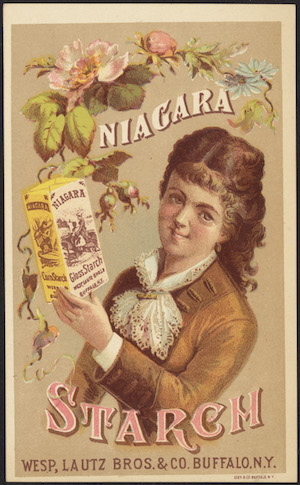Sales of breakfast cereal are down, and I have trouble being sad. I eat boxed breakfast cereal for the same reason everybody else does — it’s convenient – but generally only as a midnight snack. For quick breakfast I’m more likely to eat homemade granola or oatmeal or a PBJ. I would not be terribly sad if boxed breakfast cereal went away entirely. Not only is it bizarrely processed, but it’s probably the worst remaining artifact of late nineteenth-century thinking about food: deliberately stripped of flavor and over-sweetened to make it palatable. And I don’t care a whit about the profits of giant corporations that manufacture it.
And yet this tidbit from the original New York Times story is more than a little disconcerting:
Almost 40 percent of the millennials surveyed by Mintel for its 2015 report said cereal was an inconvenient breakfast choice because they had to clean up after eating it.
In the Washington Post, Roberto A. Ferdman comments:
Few things are as painless to prepare as cereal. Making it requires little more than pouring something (a cereal of your choice) into a bowl and then pouring something else (a milk of your choice) into the same bowl. Eating it requires little more than a spoon and your mouth. The food, which Americans still buy $10 billion of annually, has thrived over the decades, at least in part, because of this very quality: its convenience.
And yet, for today’s youth, cereal isn’t easy enough….
The industry, the [Times] piece explained, is struggling — sales have tumbled by almost 30 percent over the past 15 years, and the future remains uncertain. And the reasons are largely those one would expect: Many people are eating breakfast away from the home, choosing breakfast sandwiches and yogurt instead of more traditional morning staples. Many others, meanwhile, too busy to pay attention to their stomachs, are eating breakfast not at all.
But there is another thing happening, which should scare cereal makers — and, really, anyone who has a stake in this country’s future — more: A large contingent of millennials are uninterested in breakfast cereal because eating it means using a bowl, and bowls don’t clean themselves (or get tossed in the garbage). Bowls, kids these days groan, have to be cleaned.
Let’s be clear what we’re talking about, then: The problem isn’t that people are overworked, busy raising families in two-income households. Nobody doesn’t have time to wash out a cereal bowl. I ran a test this morning, scientific in precision of measurement if not in design: To get up from the table, carry a bowl to the sink, squirt detergent, wipe it out, rinse, then use the soapy rag to wash the spoon, set them both on the counter to air-dry, and return to the table to check the stopwatch took me exactly 36.97 seconds. That’s with no particular hurry. If you eat over the sink, you can eliminate the transit time and cut a good ten seconds off that time.
So we’re not talking about social and economic structures that make it hard for people to cook for themselves. We’re talking about laziness.
